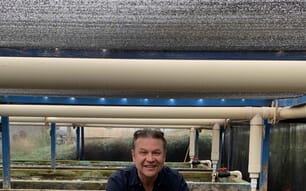The study, by the University of Illinois and the US Geological Survey (USGS), aimed to evaluate the likelihood of their successful reproduction in the St Joseph River, which flows into Lake Michigan.
The researchers used a model that examines a range of multiple flow and water temperature scenarios.
Results illustrate the highest percentage of Asian carp eggs hatch when the streamflow is low and when the water temperature is high.
Their eggs develop faster at warmer water temperatures, therefore requiring less time to drift in the river until hatching.
Low streamflows can also be conducive to reproduction when the streamflow is just fast enough to keep most of the eggs in suspension while allowing for the greatest amount of drift time before reaching the lake, thus increasing the likelihood of hatching.
"In this study, the Fluvial Egg Drift Simulator (FluEgg) model allowed us to examine the complex dependencies between flow, temperature, and egg development," said USGS hydrologist Ryan Jackson.
"This information provides resource managers with a range of conditions under which the St Joseph River is vulnerable to Asian carp reproduction."
Invasive Asian carp consume plankton from the base of the food web and reproduce prolifically which could pose substantial environmental risks and economic impacts to the Great Lakes if they become established.



